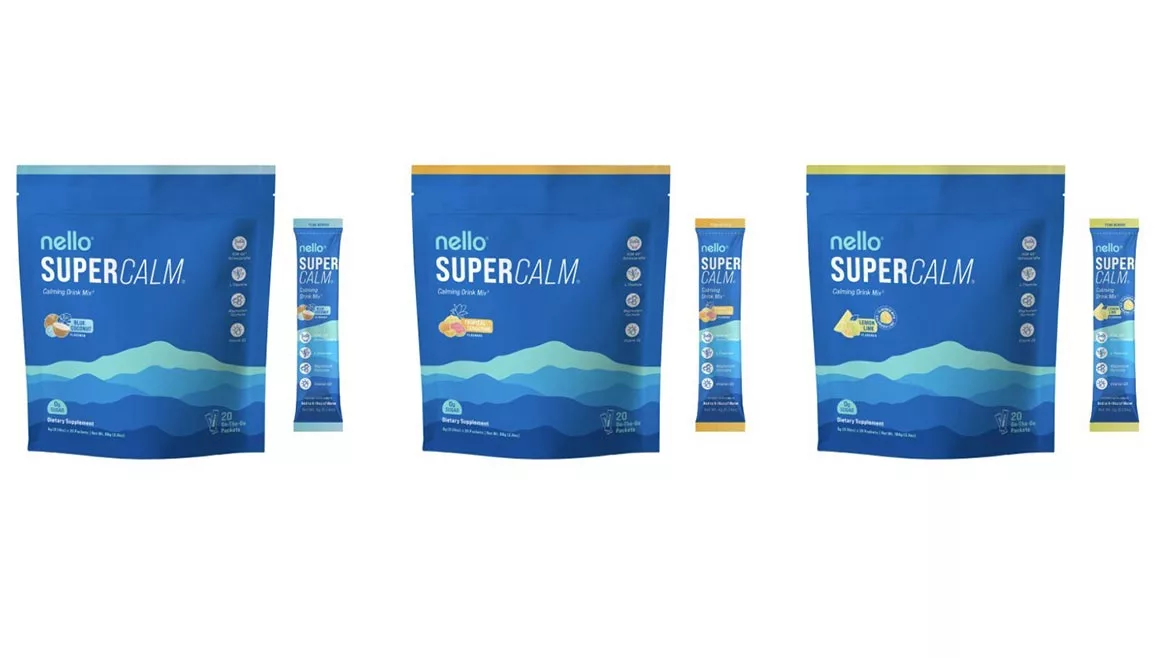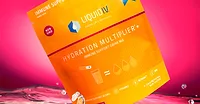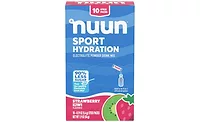Powder mixes deliver on function, flavor and hydration
Drink mix category continues to see growth

Image courtesy of Nello
In the episode “I Love You, Mom” in “Daniel’s Tiger’s Neighborhood,” Daniel, Dad Tiger, and Baker Aker are making banana bread for Mom Tiger. While mixing all the ingredients together, Daniel sings “mixa, mixa, mixa, mix.” Beverage consumers are also embracing the mixa, mixa side as evidenced by the burgeoning powder concentrate market.
“The powder concentrate category grew by 6% in volume terms in 2024 (inclusive of fruit flavored mixes, lemonade mixes, etc.) but with electrolyte-powder mixes the main sources of growth within that wider powder concentrate space,” says Howard Telford, senior global insight manager for soft drinks at Euromonitor International, Chicago.
According to Chicago-based Circana, sports drink mix saw dollar sales increase 20.3%, totaling $1.5 billion, with unit sales up 21.4%. Energy drink mix dollar sales also were up with an increase of 9.9%, totaling $335.5 million, with unit sales up 5.6%. The instant tea mixes, however, were down with dollar sales down 1.2%, totaling $514.2 million, with unit sales down 5.1%.
Given the overall strong performance of the beverage mixes market, analysts highlight the diverse attributes from today’s innovations.
“Functional benefits are certainly the most important consumer factor driving the format,” Euromonitor’s Telford says. “There has been strong interest in advanced hydration, and hydration linked to other health benefits (i.e., athletic recovery, immune support, etc.) The on-the-go convenience of the mix format is another driver (friendly for the purse or gym-bag) and there is also an affordability component as well, since even premium powder mixes generally represent good value over RTD equivalent sports drinks when comparing dollars/liter.”
Looking deeper at these trends, Telford calls attention to hydration goals when it comes to what’s driving the powdered concentrate market.
“Hydration is a central health goal, particularly for younger U.S. consumers, and more importantly hydration is a wellness platform for other need states ― and arguably also an area of fashionable, lifestyle brands (look at the Stanley mug trend, etc.),” he says. “We’re seeing more products tailored to electrolytes and caffeine for energy, or other fortified additives to support immune support, cognitive performance, athletic recovery, and other benefits.”
New York-based Nello extended its wellness portfolio last fall with three new flavors for its Supercalm mix: Blue Coconut, Tropical Tangerine, and Calamansi Lemon Lime.
Supercalm, Nello’s flagship product, is comprised of a unique blend of natural ingredients designed to promote relaxation and mental clarity, it says. The new flavors have been meticulously crafted to offer a sensory experience while maintaining the core benefits that Supercalm users love, it adds.

Additionally, The Jel Sert Co., Chicago, announced a collaboration with global lifestyle brand Jamba, unveiling Jamba Singles to Go!, a new line of single-serve powdered stick packs. The launch of Jamba Singles To Go! features three classic Jamba flavors, including Razzmatazz, Strawberries Wild, and Mango-A-Go-Go, combining the brand’s bold, iconic flavors with either a choice of supporting energy or healthy immune function.
Jamba Singles To Go! provides consumers with an excellent source of vitamins A, C, E, and Zinc to support healthy immune function, the company adds. The Mango-A-Go-Go variety is formulated to provide energy with green tea leaves, ginseng, and guarana.
When it comes to the future for innovations, Euromonitor’s Telford explains that the powder mix category has two aspects to it.
“There are two sides to the powder mix market. On the one hand, you have established fruit-flavored powders (fruit punch, lemonade, etc.) that represent a value-oriented fruit drink option for families,” Telford says. “The growth side of the powder mix market are hydration powders/sticks. Obviously, electrolytes and other ingredients associated with replenishment of fluids and faster athletic recovery are the most essential attributes. We also see products linking ingredients and attributes to immune support (i.e. zinc), digestion (i.e. probiotics/prebiotics), and energy (B vitamins and caffeine).
“Flavors variety is another common product attribute, with brands like Liquid IV offering different, creative flavor profiles to traditional RTD isotonics,” he continues. “We’re also seeing lower sugar profiles, with stevia, monk fruit, and other natural lower-calorie nutritive sweeteners preferred by leading brands. The single-serve stick or sachet packet is also another common attribute in the powder mix market today, offering convenience for on-the-go consumption and travel.”
The category also is seeing more established brands in other beverage categories enter the drink mix market through powder versions of their popular varieties.

Ocean Spray Cranberries Inc., Boston, has announced a new way for consumers to enjoy juice drinks with the introduction of new powdered drink mixes, in partnership with Dyla Brands. This collaboration marks a significant step in bringing familiar and delicious flavors to the powdered beverage drink mix space, it notes.
With zero grams of sugar, the new mixes mimic the flavors of some of Ocean Spray’s most popular juice blends, including White Cran x Strawberry, Cran x Grape, and White Cran x Peach flavors. Made with real cranberry juice powder, these new products demonstrate Ocean Spray’s commitment to quality and taste, providing a burst of fruity refreshment that can be enjoyed anytime, anywhere, the company says.
“Ocean Spray is an iconic brand, and we are excited to work together to innovate in the drink mix space,” said Neel Premkumar, CEO and founder at Dyla Brands, in a statement at the time of the release. “Our goal is to provide consumers with flavorful, convenient options that enhance their hydration, and these new drink mixes are a perfect addition to that vision.”
Euromonitor’s Telford explains that the expansion into the powder mix market allows brand owners to touch upon different profiles and attributes that consumers are seeking.
“Different flavor profiles, an expanded array of benefits, and the appeal of customization offer opportunities to differentiate from the RTD sports category,” Telford says. “Likewise, the price-per-liter advantage is important in a tighter affordability climate for consumers, and the appeal of less plastic waste can resonate with green consumers.
“It is at least as important today, given the success of Liquid IV and imitator brands, for powder mix brands to differentiate within the functional powder mix category itself,” he continues. “We’re seeing more micro-segmentation of brands appealing to different groups ― for instance, LMNT’s all-natural ingredient profile, or the close association with Skratch Labs powder mixes and the sport of cycling.”
Sustainability is another motivating factor for consumers.
“The sustainability component is also an ancillary benefit for consumers, since the powder mix format cuts back on single-plastic waste,” Telford says. “So is the notion of customization and personalization of beverage flavors and benefits ― using your own dosage of powder mix, combining with other ingredients, and building your own functional ritual (one example being the viral ‘WaterTok’ trend from last year).”
Although powder mixes can experience some competition with other beverage categories. Telford notes that it actually has offered an opportunity to engage new consumers into some beverage spaces.
“There is some risk of cannibalization between packaged water, particularly if we think about electrolyte-enhanced fitness waters,” Telford says. “But the main source of trade-off has been between RTD sports drinks and the powder mix category, although the powder segment has also brought new consumers to the hydration ‘category.’
“The launch of Gatorade’s new Hydration Booster last year (in September) demonstrates the importance of this mix product format within hydration drinks overall,” he continues. “We’ve also seen more emphasis from Gatorade (the leading brand in U.S. sports drinks) on its Gx reusable bottle and pod format, which is also aligned with the consumer desire to customize and reduce packaging waste.”
For all these reasons, Telford remains optimistic on the future growth for the drink mix category.
“Even as the segment matures, I think there are a lot of reasons to remain bullish about the category,” Telford says. “We’re likely to see more brands operating in different micro-segments of fitness and wellness, as mentioned above. We’re also likely to see the powder format moving from electrolyte-enhanced hydration products to a wider array of need-states, including areas like nootropics, stress-management, focus, mood-regulation etc.
“As this space develops, we may also see more in the way of novel flavor innovation (an area where sports and energy drinks have excelled) and also more exclusive collaborations and sponsorships or branded partnerships that mirror the approach of major RTD functional brands,” he concludes.
Looking for a reprint of this article?
From high-res PDFs to custom plaques, order your copy today!





